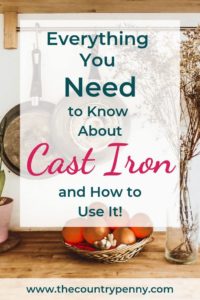Don’t have time to read it now? Pin it for later!
Ya’ll know, I hate grocery shopping.
I hate taking my baby out to the store, it takes so much time and I always seem to spend more than I mean to.
And honestly? There’s a ton of weird people out there!
Since I’ve pretty much perfected the art of avoiding the grocery store whenever possible, I figured I’d let you in on my secret.
Ready?
I have a list of pantry essentials that I always keep on hand so that I can cook actual meals that are yummy without having to run to the store.
One of the biggest problems that people have when they’re starting to cook at home is they don’t have the basics on hand and they end up buying a ton of ingredients that they will only use for one recipe. Then they decide that home cooking is either too hard or too expensive and they end up getting take out again or cooking hamburger helper.
Well, yeah. Cooking from scratch is insanely expensive when you buy a $4 bottle of tarragon for chicken salad that you will only make once (I still have that tarragon hanging out in the back of my spice rack!). But when you stock your pantry with essentials that you can use over and over again to make a huge variety of meals cooking from scratch becomes inexpensive and easy.
The main components to a pantry you can actually cook from are,
Perishables + Protein + Carbs + Vegetables + Baking + Spices
Let’s go over what you should know about each of these categories so that you can stock a pantry that is tailored to how you actually cook and to the things you’ll actually eat.

1. Perishables
Buy milk, eggs, cheese. These are necessary for so many recipes. If you want to do any baking, these are necessary. My family drinks a lot of milk but I know lots of families don’t.
You still need milk though. Want to make a sauce? You need milk. Buy the milk. It’s the same for eggs.
2. Protein
Hands down, chicken is going to be your least expensive meat protein. No, not chicken breast. Buy bags of leg quarters. I can get them at Walmart for $0.60/lb. No other meat protein comes close in cost.
Also beans! Beans are even cheaper than chicken. I’m not a huge fan of beans but you bet I buy them and cook with them. They’re great for stretching a meal and with a little planning, dry beans are crazy cheap.
If you have an Instant Pot you don’t even have to plan! Dry beans cook in well under an hour, no soaking required. A serving of black beans is about 8 cents, that’s half the cost of canned beans.
3. Carbs
Rice is probably my favorite way to stretch a meal with pasta coming in a close second. You can add either to soups, serve them with a gravy, or turn them into a casserole. They also make great side dishes.
Rice is crazy inexpensive, a 20 lb. bag is less than $9. That’s over 200 servings! Pasta isn’t quite as economical at around a dollar per lb. but it’s still a decent buy. I like to keep egg noodles and spaghetti noodles on hand, but if you prefer another type of pasta you can buy that instead.
It really doesn’t matter what type of pasta you use in most recipes. I know there’s some purists out there that would argue with me on that but I’m cooking for kids most of the time, so all the wanna-be food critics can go sit in the corner with their fancy pasta.
4. Vegetables
It’s up to you if you want to buy frozen or canned vegetables. Except for peas. Canned peas are nasty! Don’t buy canned peas.
This is another area that you can really customize to your tastes. Love Brussel sprouts? First of all yuck, but you can buy Brussel sprouts. My family likes peas, corn, and broccoli so I tend to keep those on hand all the time. If your family likes carrots, buy carrots.
A note though, since we are building a pantry that we can cook from without going to the store I’m not talking about fresh vegetables. By all means have some on hand, but for the purposes of this post I’m sticking to foods that can go in your freezer or on your shelf and last for a while.
5. Baking
This category includes things like flour, sugar, and vanilla. Even if you don’t bake a lot, you should have the basics on hand. This is what will let you make pancakes in the morning for your kids.
Speaking of making breakfasts, making breakfast is one of the easiest ways to reduce your grocery bill. My mom fed us homemade from scratch pancakes almost every morning for breakfast. Not only was it filling but with six kids to feed, it was a huge money saver! But in order to take advantage of those savings, you have to have the basics on hand to make them.
A bag of flour will last a long time, as will a bag of sugar. One of my favorite ways to stretch a meal a bit further is to quickly make a batch of biscuits. They’re quick and easy and they will fill out a meal that would otherwise be a bit light.
6. Spices
This is where a lot of people tend to go wrong. They buy something that isn’t useful in a ton of recipes, like the tarragon hiding in the back of my spice rack. I’ve probably used it twice in the last three years. It’s fine to add some of those less used spices in after you have a good base of the most commonly used spices.
Don’t start off buying a spice that will only be used for one recipe unless it’s a recipe you know you’ll make all the time. An example would be chipotle powder. My mom doesn’t like spicy stuff at all so she would never buy it, but I use it seriously a couple times a week. You know what you like to eat, so feel free to tailor your spices to your palate.
At a minimum, I recommend salt, pepper, garlic, onion, Italian seasoning, and taco seasoning. And I do mean at a minimum, it was so hard for me to narrow it down! If you really want the ability to make a ton of different tasting foods from the same main ingredients you have to have a decent variety of spices and seasonings. Also in this category are things like soy sauce, barbeque sauce, and hot sauce.

“But wait” you say, “I don’t have $500 to stock my pantry with all this stuff!”
That’s ok! Here’s how you stock your pantry and still have food to feed your family for the week super inexpensively. It’s simple. Each week set aside part of your grocery budget to buy the essentials for one meal.
For example, if you were to make pancakes you would plan on buying flour, sugar, salt, baking powder, etc. However, the way this works is that when you buy the ingredients, buy a 25 lb. bag of flour, a 25 lb. bag of sugar, a large container of salt, you get the picture. Now you’ve pretty effortlessly started to build your pantry. The next week maybe you decide to make Chicken Tortilla Soup. Instead of buying a couple pounds of chicken leg quarters in the Styrofoam packages, you buy a 10 pound bag of leg quarters and freeze the extra for later.
Now you have all the ingredients for pancakes and chicken tortilla soup, BUT the real magic happens when you look at what else you can make with those ingredients too! Guess what? You’ve also got all the ingredients for biscuits or baked chicken or hey, if you buy a package of mixed vegetable we can make a pot pie!
If you follow this system for a month or so you’ll be shocked at how much you can build up your pantry without hurting your budget at all. Then as you get your pantry built up, you can restock things as you get low or when there’s a great sale. Case lot sale on green beans? You have room in your budget to buy several months to a years’ worth.
Additionally, the peace of mind that comes from knowing that if something happens, whether it’s a car breakdown or a small paycheck, you can still feed your family without having to stress about having money for groceries is invaluable. You guys, I’ve had weeks where there was only five dollars left in my checking account after the bills were paid and gas was put in the car to get to work. Knowing that we had food in the pantry and that there wouldn’t even be a hiccup in my ability to cook for my family has made all the difference to my family so many times and I know it can give you the same comfort.
So there you have it! Start your pantry by purchasing ingredients in bulk for one meal per week. Do make sure the meal you choose is within your budget to stock up on, for example you shouldn’t try to stock up on filet mignon and lobster when you’re on a beans and rice budget.
This simple method will allow you to build up your pantry and save money easily. For me one of the biggest benefits of having a well-stocked pantry is the ability to choose when I have to go grocery shopping. Or avoid it all together for a week or so if I choose to or if I need to when money is tight.
What are your favorite pantry meals? Comment below and let me know!





